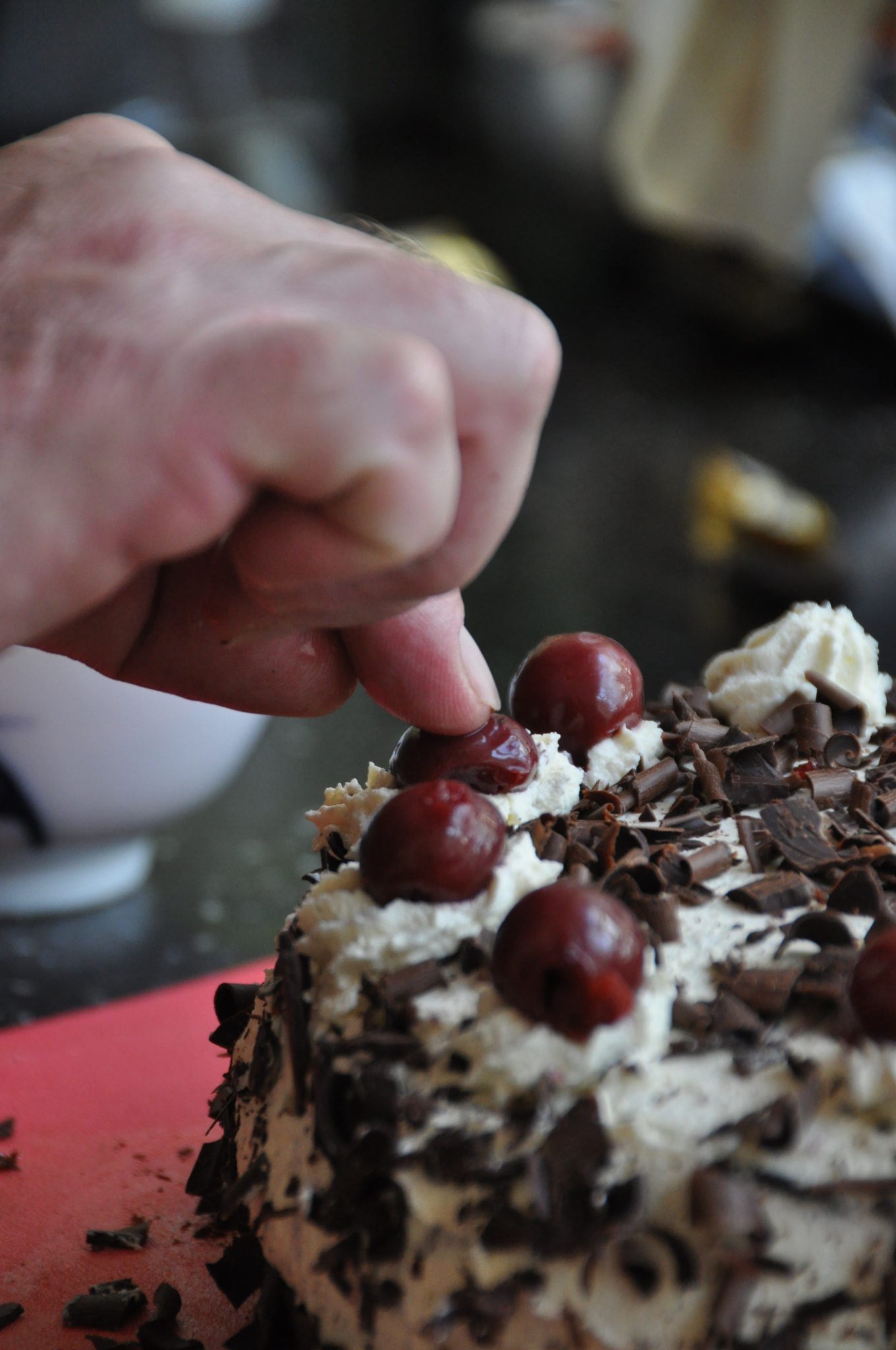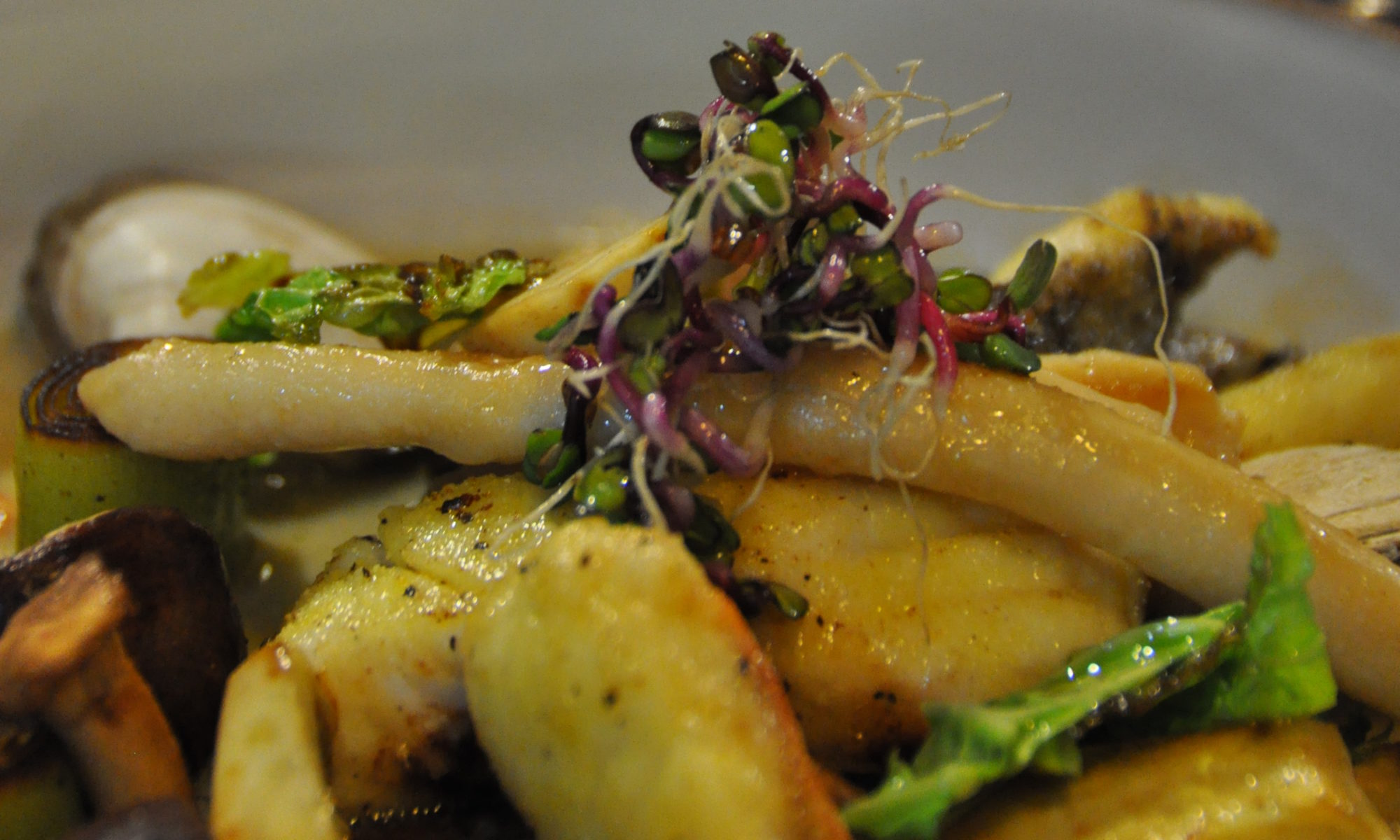
Following is for a 240 mm round baking tray. You need a springform tray (one where the rim can be removed) or one of those where the bottom comes out.
100 g dark chocolate (go for quality and high cocoa content)
150 g soft unsalted butter
150 g sugar
4 free range medium size eggs
50 g ground almonds
50 g corn starch
50 g normal white wheat baking flour
50 g fine dried bread crumbs
1 tablespoon of baking powder (unless you use self-rising flour)
1 tablespoon of vanilla sugar (or equivalent amount of vanilla extract, aroma or genuine vanilla)
Process:
Melt the chocolate in a bowl over hot water or *very* carefully in the microwave oven at very low power setting. This works quicker but it is easy to burn the chocolate in the micro.
Mix butter, sugar and vanilla, whisk until slightly foamy.
Separate the egg yolks from the whites, whisk the egg whites stiff.
Mix almonds, flour, corn starch, bread crumbs. Add a tablespoon of dark cocoa for an extra boost if you want.
Check that the chocolate has cooled down but is still runny or very soft. Must be under 80 C so that the eggs won’t cook in it.
Mix the egg yolks into the chocolate.
Add the almonds, etc, to the eggs and chocolate. Mix.
Gently add the egg whites to the mix. Traditional cooking wisdom calls this to “fold in the whites” using a thin metal spoon, careful not to knock out too much air. I prefer using a whisk, just don’t use it for whisking. Instead gently rotate it to fold the egg whites into the batter mix. I find it is easier to evenly distribute the whites using the whisk; the traditional spoon method is likely to break more of your stiff whites.
Preheat the oven to 180 C. Use Top and bottom heat or convected air.
Butter the form really well, especially around the corners.
Bake for 45 minutes.
Rest for 3 hours. Remove it from the tin when the time is right. Too soon and it will break, too late and it will be soggy. You need to judge and find the sweet spot, but if you have a good baking tray where the sides come off or the bottom can be pushed up, the highest risk is in that you burn your hand, wrist or arm on the hot tin. Every time…
Slice once or twice, douse with booze.
Make the filling, assemble and decorate.
Afterthought, June 2020: Mother’s Express Sponge makes a fast, easier and ligher base for this.









 Well, I say millefeuille but really we are talking about three sheets of double-layered filo pastry, but it does make for an excellent starter!
Well, I say millefeuille but really we are talking about three sheets of double-layered filo pastry, but it does make for an excellent starter!


 This is a scrumptious goats’ cheese tarte, which makes for a great vegetarian lunch or supper.
This is a scrumptious goats’ cheese tarte, which makes for a great vegetarian lunch or supper.



 Here’s an all-time favourite. It’s Tarte Flambé to the French, Flammkuchen to us, and not very well known outside the southwestern Germany and northeastern French areas. But everyone loves it!
Here’s an all-time favourite. It’s Tarte Flambé to the French, Flammkuchen to us, and not very well known outside the southwestern Germany and northeastern French areas. But everyone loves it!



 We can’t forget the Chisimath, a brilliant but sadly long gone local Singaporean restaurant, best remembered for their friendly service and their salt and pepper squid.
We can’t forget the Chisimath, a brilliant but sadly long gone local Singaporean restaurant, best remembered for their friendly service and their salt and pepper squid.







 Spanakopita is a Greek spinach tarte. This is a slightly up-market version: instead of a flat tarte with a varying degree of density, soggyness and puffyness, our open Spanakopita is baked as a stand-up roll of filo pastry with the traditional spanakopita filling of spinach, feta cheese and pine kernels.
Spanakopita is a Greek spinach tarte. This is a slightly up-market version: instead of a flat tarte with a varying degree of density, soggyness and puffyness, our open Spanakopita is baked as a stand-up roll of filo pastry with the traditional spanakopita filling of spinach, feta cheese and pine kernels.






 Sopa Espirito Santo is one of those quick one-pot wonders which warm body and soul and, for us, bring back lovely memories of the Azores from way-back-then.
Sopa Espirito Santo is one of those quick one-pot wonders which warm body and soul and, for us, bring back lovely memories of the Azores from way-back-then.






 One of the household favourites, over many, many, years. This delicious pudding is known in Portugal as a pudim flan, in Spain as a caramello, in France as creme caramel. We call it pudim flan, or flan for short.
One of the household favourites, over many, many, years. This delicious pudding is known in Portugal as a pudim flan, in Spain as a caramello, in France as creme caramel. We call it pudim flan, or flan for short.


 Soup with attitude, Jamie Oliver called it. I’d say it’s soup with passion, because it’s a bit of a palaver to make, so you’d better really want it. But once you sampled it, you will love it.
Soup with attitude, Jamie Oliver called it. I’d say it’s soup with passion, because it’s a bit of a palaver to make, so you’d better really want it. But once you sampled it, you will love it.





 These are the real Bretzeln, not the crisp, bone-dry Pretzels you are given on an aeroplane.
These are the real Bretzeln, not the crisp, bone-dry Pretzels you are given on an aeroplane.












